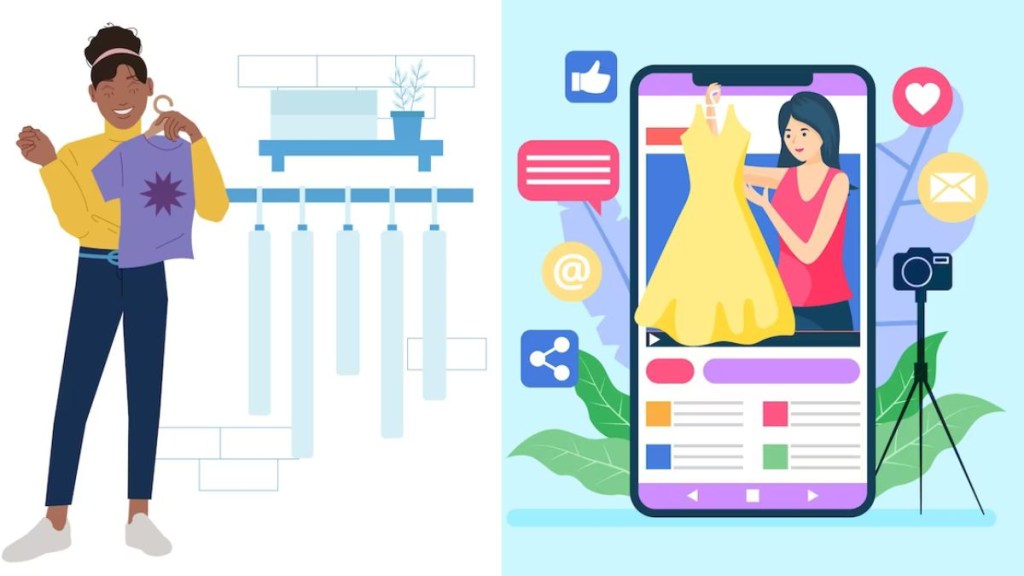We have all scrolled miles and miles on Instagram Reels, YouTube Shorts, among other short video platforms, and have come across one kind of common video called, ‘get-ready-with-me’ that is GRWM. “GRWM videos are a big hit. These are what is called advertorials and not advertising, and that is its fundamental appeal. Your favourite influencer is out there flaunting the apparel. There is branding for sure, but this is not a hard sell. Nowhere an influencer asks to buy. However, selling is subliminal and this works wonders for the ecommerce platforms,” Harish Bijoor, founder, Harish Bijoor Consults told BrandWagon Online.
It is estimated that the short video market will be worth $5.4 billion by 2025, as per market research firm, Statista. This growth is being driven by the increasing popularity of platforms such as Instagram Reels, and YouTube Shorts. Furthermore, a study by Cisco found that 82% of Internet users watch online videos, and that this number is expected to grow to 92% by 2025. In India, the short video market is growing rapidly, with over 300 million users.
Marketing or Money!
At the end of the day, all campaigns including the ones featuring influencers are made with the aim to drive return-on-investment (RoI) – which in this case would be in the form of same clothes or other fashion accessories bought by consumers. A study by Mediakix found that influencer marketing campaigns can generate an average of 11.6% in ROI. “There are some specific ways where short-videos can help e-commerce platforms in advertising. These can be used to showcase products in a visually appealing way, to tell stories about products and how they can benefit users. These can also be used to create a sense of urgency and drive sales, and are essential to build relationships with influencers and their followers,” Rajat Wahi, partner, Deloitte Consulting, India, an audit firm, said.
Interestingly, e-commerce platforms claim that the majority of these videos are organic and only a few are paid. For instance, Meta-backed Meesho claims that its ‘Get Ready With Me’ videos are a mix of 90% organic and 10% paid content. For the platform these videos are more than just content, it is a gateway for users to connect with trends and explore varied shopping recommendations. “Every month, we reach 50 million users with these videos. In the realm of influencer marketing, our partnerships are not just about numbers but also about forging authentic connections. The impact goes beyond conversions, extending to word-of-mouth marketing and exponential engagement,” Nilesh Gupta, senior director, growth, Meesho, explained, adding that the company has allocated five percent of marketing spend on such kinds of activities.
According to Statista, the short-form video segment saw an increase in active users between 2019 and 2021, with the user base amounting to 290 million during the latter. The figure is further expected to grow to 650 million users by 2025.
So what Influencers think………..
To be sure, influencers believe that there is a difference in pricing and quality of the products being purchased from different ecommerce platforms and this is because of sellers. Interestingly, when asked to pick most of the influencers were of the opinion that despite being expensive Myntra is better in terms of quality and style. “Myntra in general is partnered with better sellers in terms of quality but then it is usually the costliest. Amazon and Meesho are more or less the same in terms of quality because mostly sellers are the same but when it comes to prices, products on Amazon are much more expensive whereas Meesho is affordable,” Soundarya Thakur, digital content creator, added.
Moreover, fashion influencers opine that the pay on such videos varies from one influencer to another depending on the reach, engagement and content. According to industry estimates, at the beginning influencers earning begin from Rs 70,000. “Amazon and Myntra often provide competitive rates due to their resources. While Meesho’s compensation is tied to sales generated through my referrals, offering commissions. These collaborations also vary according to the quality of a creator’s content,” Arun Nair, fashion content creator, said.
According to industry experts, the pay generally starts from a barter and goes up to any amount according to the brands’ budget. According to Thakur, usually Myntra has the best commercials and it prefers to work with exclusive and limited people. “Compared to this, Amazon does more massy work, so the pay is average,” she noted.
Furthermore, Amazon and Myntra offer more frequent collaboration opportunities through ongoing influencer campaigns. As for Meesho it claims to focus on targeted marketing efforts, “resulting in less frequent but unique collaborations,” Nair said.
